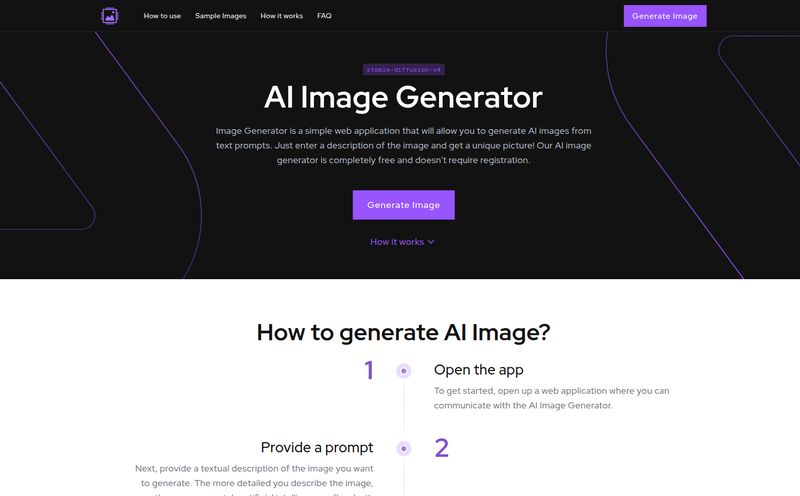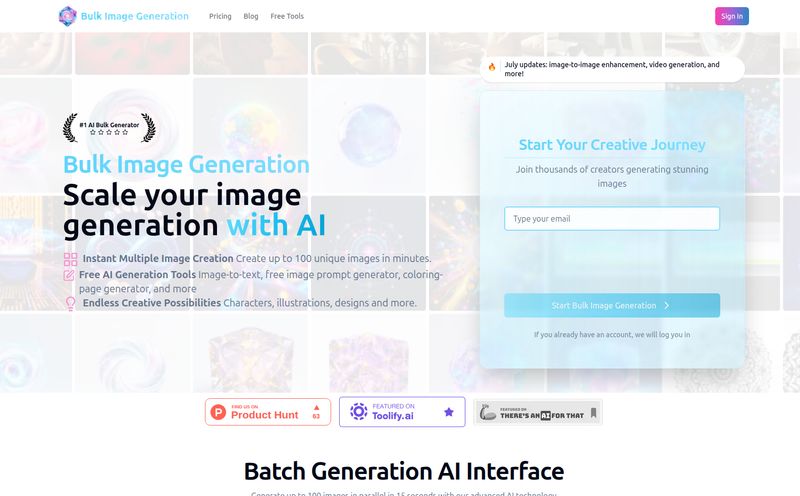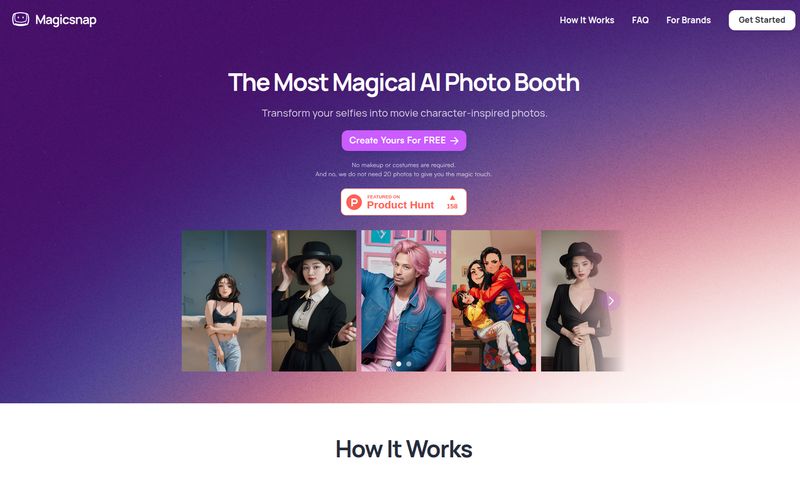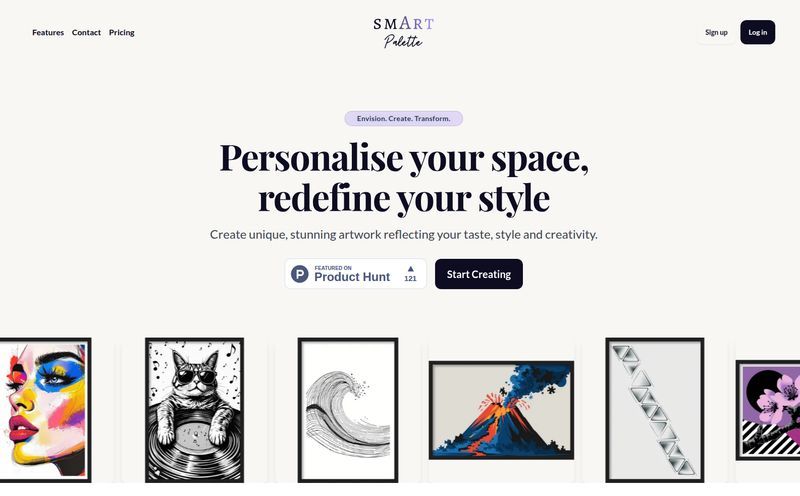The last couple of years in the digital art world have been… turbulent. The AI art gold rush hit, and it felt like the Wild West all over again. Suddenly, stunningly complex images were popping up everywhere, created in seconds. But behind the magic, a storm was brewing. Artists were rightfully furious, seeing their styles and years of hard work scraped into datasets without their consent. It’s been a messy, complicated, and often heated debate.
I've been in the SEO and digital creative space for years, and I've watched this unfold with a mix of fascination and dread. It felt like we were at a crossroads: embrace the tech and ignore the creators, or fight the future? Then, an old giant of the internet art scene, DeviantArt, stepped into the ring with its own solution: DreamUp™. Their pitch wasn't just about making cool pictures; it was about doing it fairly. But is it all just good PR, or have they actually cracked the code?
So, What is DeviantArt DreamUp, Really?
At its core, DreamUp is an AI image generator, much like Midjourney or Stable Diffusion. You type in a text prompt—say, "a bioluminescent fox sleeping in a crystal cave"—and the AI whips up an image for you. Simple enough. But the key difference isn’t in the what, it's in the how. DreamUp is built directly into the DeviantArt platform, a community that has been home to digital artists for over two decades. And they claim to have built it with those artists in mind.
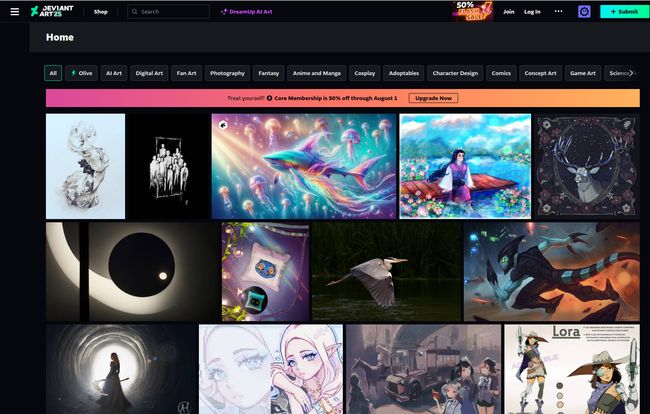
Visit DeviantArt DreamUp
Their mission statement is all about creating AI art "safely and fairly." This isn't just a tool; it's a statement. It’s DeviantArt trying to build a fortified town in the middle of the AI Wild West, offering a space where the rules are clearer and the original creators have a say. Every new DeviantArt member gets 5 free prompts to give it a spin, which is a nice, low-risk way to see what it's all about.
The Million-Dollar Question: Is It Actually Fair to Artists?
This is the big one, isn't it? The part that matters most. Anyone can make an AI tool, but making one that respects artists is another beast entirely. From what I’ve seen, DeviantArt is making a genuine effort here, and it centers on one powerful concept: control.
They know their platform is a massive repository of original art. So, they gave artists the power to tell AI models to back off. By default, DeviantArt tells AI datasets they can’t use content from the platform. Furthermore, artists can explicitly label their work with the 'noai' tag, which acts as a clear, machine-readable directive to prevent their art from being used for training. This is huge. It’s a direct response to the biggest complaint artists have had since this all started. You, the artist, get to decide.
On top of that, there's transparency. Art created with DreamUp is automatically flagged as AI-generated. You can’t just create something and pass it off as your own painstaking digital painting. I think this is a brilliant move. It helps maintain a clear distinction and allows users to filter how much AI art they see while browsing the site. It’s about coexistence, not replacement. A refreshing change of pace, if you ask me.
Getting Your Hands Dirty: The DreamUp Experience
Okay, so the ethics are a big plus. But is it any good to actually use? You start with your handful of free prompts. The interface is pretty straightforward, which is great for newcomers. You're not bombarded with a million sliders and settings. You write your prompt, maybe choose an aspect ratio, and let it cook.
One of the standout features for me is the high-resolution upscaling. A lot of AI generators spit out a small, slightly fuzzy image, and you need a separate tool to make it usable. DreamUp lets you upscale your creations to a much higher quality right within the platform. That's a practical benefit that saves time and a potential headache.
The generations themselves are pretty solid. Like any AI, the quality of your output depends heavily on the quality of your prompt. It’s a skill in itself! But DreamUp seems to be well-trained to produce aesthetically pleasing results, which makes sense given the artistic data it is allowed to learn from.
The Price of a Clear Conscience: Breaking Down the Core Memberships
Here’s a crucial point: DreamUp isn't a standalone product you buy. Access is bundled with DeviantArt's Core Membership. After you burn through your 5 free prompts, you'll need to subscribe to keep creating. Some might see this as a downside, but if you're already a part of the DA community or looking for an all-in-one platform, it’s actually pretty convenient. The pricing is tiered, and at the time of writing, they have a pretty sweet 50% off promotion running.
Let's look at the plans (with the promo pricing):
| Plan | Price (Promotional) | DreamUp Prompts | Best For |
|---|---|---|---|
| Core+ | $3.34 /mo | 200 points (200 prompts) | Hobbyists & Sharers |
| Core Pro | $6.29 /mo | 500 points (500 prompts) | Serious Artists & Sellers |
| Core Pro+ | $8.34 /mo | 1,000 points (1,000 prompts) | Power Sellers & Professionals |
Note: These prices reflect a 50% discount. Always check the official DeviantArt Core Membership page for the most current pricing.
Each tier also comes with other perks like more profile customization, lower platform fees for selling art, and a larger private file storage (their 'Stash'). So you're not just paying for AI prompts, you're investing in a whole suite of tools for an online art portfolio.
My Honest Take: Is DreamUp Actually Worth Your Time and Money?
Alright, let's cut to the chase. In my opinion, DreamUp is a fascinating and, frankly, necessary product. Its a bit of a walled garden, but maybe that’s a good thing. For years, the AI art scene has felt like it's been built on a foundation of questionable ethics. DreamUp is one of the first major players to try and build it on a foundation of respect.
Who is this for? I'd say it's perfect for a few groups:
- The Ethically-Minded Creator: If you're intrigued by AI but have been put off by the data scraping issues, this is your best bet.
- Existing DeviantArt Members: If you're already on DA, upgrading to a Core membership to play with DreamUp is a no-brainer. It integrates perfectly with the ecosystem you already use.
- Hobbyists and Beginners: The user-friendly interface and the community aspect make it a great starting point for anyone wanting to experiment with AI art without getting overwhelmed.
It might not be for the hardcore prompter who wants absolute, unrestrained freedom and access to every bleeding-edge model the second it drops. Tools like a local Stable Diffusion setup offer more raw power. But for 90% of users, DreamUp offers a fantastic balance of capability, ease of use, and a clear conscience. Its not just a tool; it's a vote for a more sustainable future for digital art.
Frequently Asked Questions
- Do I own the art I create with DreamUp?
- Yes, according to DeviantArt's terms, you own the creations you make. However, like most AI tools, the copyright landscape is still evolving, so it's always good to be aware of the nuances if you plan to use it for major commercial projects.
- Can I stop DreamUp from using my own art for training?
- Absolutely. This is its biggest selling point. DeviantArt automatically excludes your art from being used to train third-party AI models, and you can add a `noai` tag for extra protection and to signal your preference clearly.
- How many free prompts do I really get?
- You get 5 free prompts when you're a DeviantArt member. After that, you'll need to upgrade to a Core Membership to get a monthly allowance of prompts (or 'points').
- Can I sell the art I make with DreamUp?
- Yes, you can. The Core Pro and Pro+ memberships are even designed to help with this, offering lower platform fees for sales on DeviantArt. The AI-generated tag remains, ensuring transparency with your buyers.
- Is this pricing permanent?
- The pricing shown in most screenshots is part of a 50% off promotion. The standard rates for Core membership are higher, so it's a good idea to check their official page for the current deal.
A Final Thought on the Dream
DeviantArt's DreamUp isn't going to single-handedly solve the complex ethical puzzle of AI art. But it’s a massive step in the right direction. It proposes a model where technological innovation and artist respect can actually coexist. By giving control back to the creators and prioritizing transparency, DreamUp isn’t just a cool new toy. It's a sign of hope that the future of digital art can be collaborative, not just extractive. And for that, I think it deserves a serious look from anyone in the creative space.
